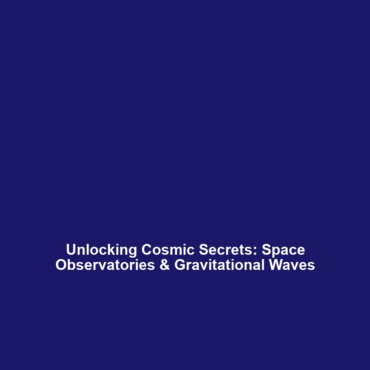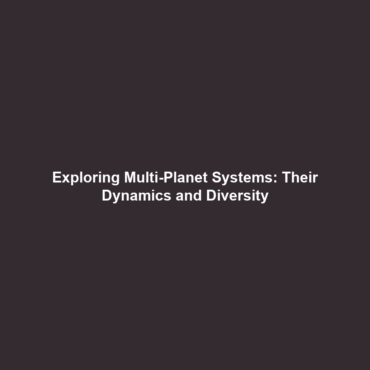Why Space-Based Observatories Will Expand Our Understanding of the Universe
Understanding the universe has long been a quest for humanity, and with the emergence of gravitational waves as a new means of cosmic detection, space-based observatories are poised to revolutionize our comprehension of the cosmos. These innovative platforms allow scientists to explore phenomena that were previously inaccessible through ground-based observatories. By studying the ripples in spacetime, we can unlock extraordinary insights into the very fabric of our universe and its most enigmatic events.
Key Concepts of Space-Based Observatories in Gravitational Wave Research
Space-based observatories, such as the Laser Interferometer Space Antenna (LISA), will significantly enhance our understanding of gravitational waves and their implications. Here are some key concepts that illustrate this connection:
What Are Gravitational Waves?
Gravitational waves are ripples in spacetime generated by massive celestial events, such as black hole mergers or neutron star collisions. They provide a new way to observe the universe, complementing traditional electromagnetic observation methods.
Advantages of Space-Based Observation
Space-based observatories can overcome many limitations of ground-based ones, including:
- The absence of atmospheric disturbances.
- A wider range of frequencies for more detailed measurements.
- Continuous observation capabilities, unaffected by day-night cycles.
Applications and Real-World Uses
The implications of space-based observatories extend far beyond mere observation. Here are significant applications related to gravitational waves:
- Astrophysics Research: Understanding gravity and mass distribution in the universe.
- Cosmology: Gaining insights into the early universe and its evolution.
- Technical Innovations: Utilizing advanced technology for high-precision measurements.
Current Challenges of Space-Based Observatories
Despite their potential, there are notable challenges in the current landscape of space-based observatories:
- High costs associated with launching and maintaining space missions.
- Technological constraints in developing sensitive instruments for nuanced detection.
- International collaboration challenges to share data and enhance research findings.
Future Research and Innovations
The future of gravitational wave research looks promising, with various innovations on the horizon:
- Next-Generation Space Missions: Upcoming telescopes may include advanced capabilities for real-time analyses.
- Increased Sensitivity: Developments in sensor technologies to detect fainter signals.
- Data Analysis Techniques: Enhanced algorithms leveraging artificial intelligence for richer insights.
Conclusion
In summary, space-based observatories represent a groundbreaking frontier in the study of gravitational waves, promising to significantly expand our understanding of the universe. As we continue to invest in these advanced technologies, we open the door to new astronomical discoveries. Researchers and space agencies worldwide must collaborate to overcome existing challenges and harness the potential of this field. For more information, explore our articles on gravitational waves and space observatories.









